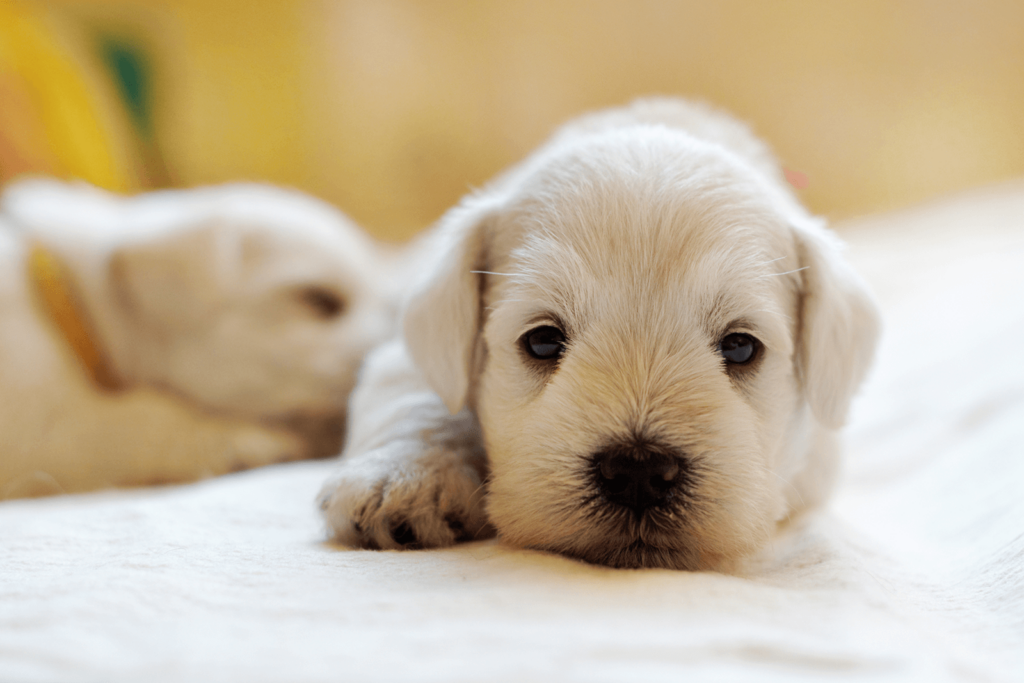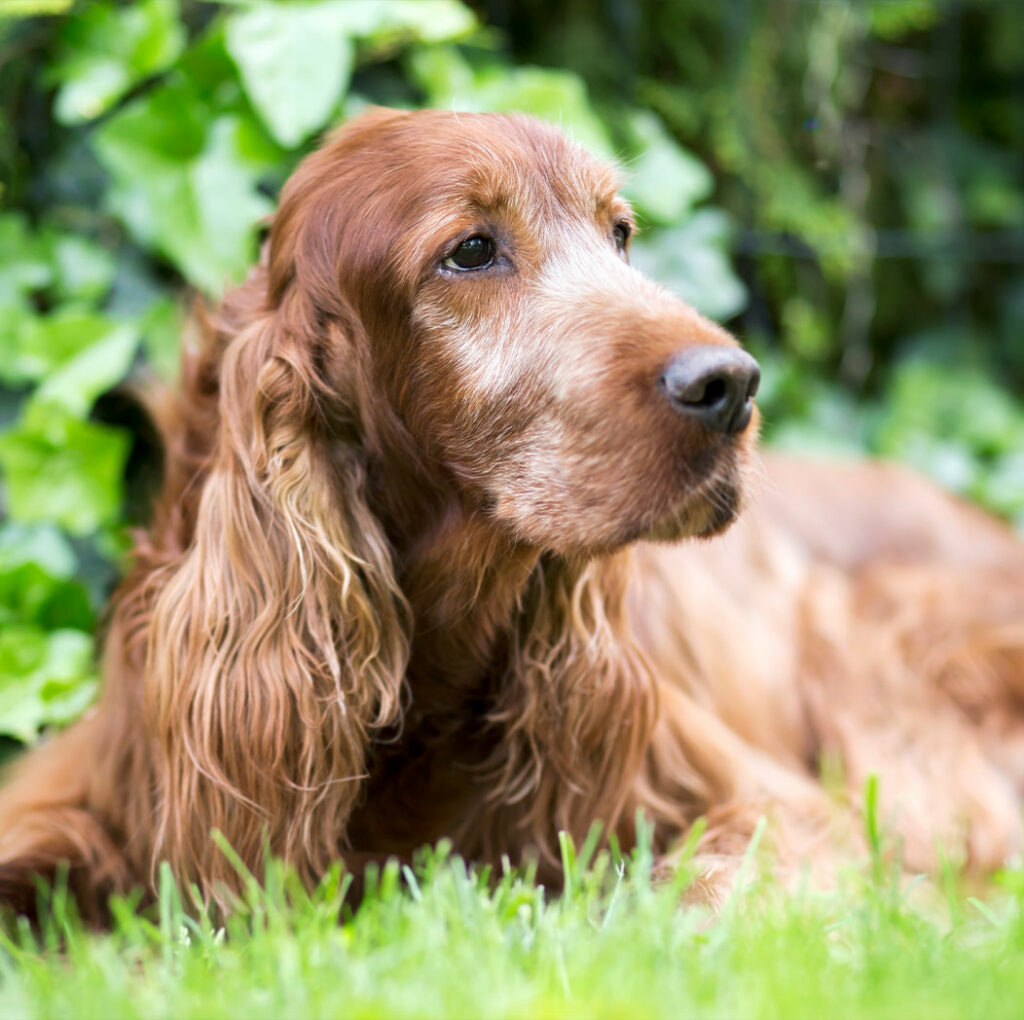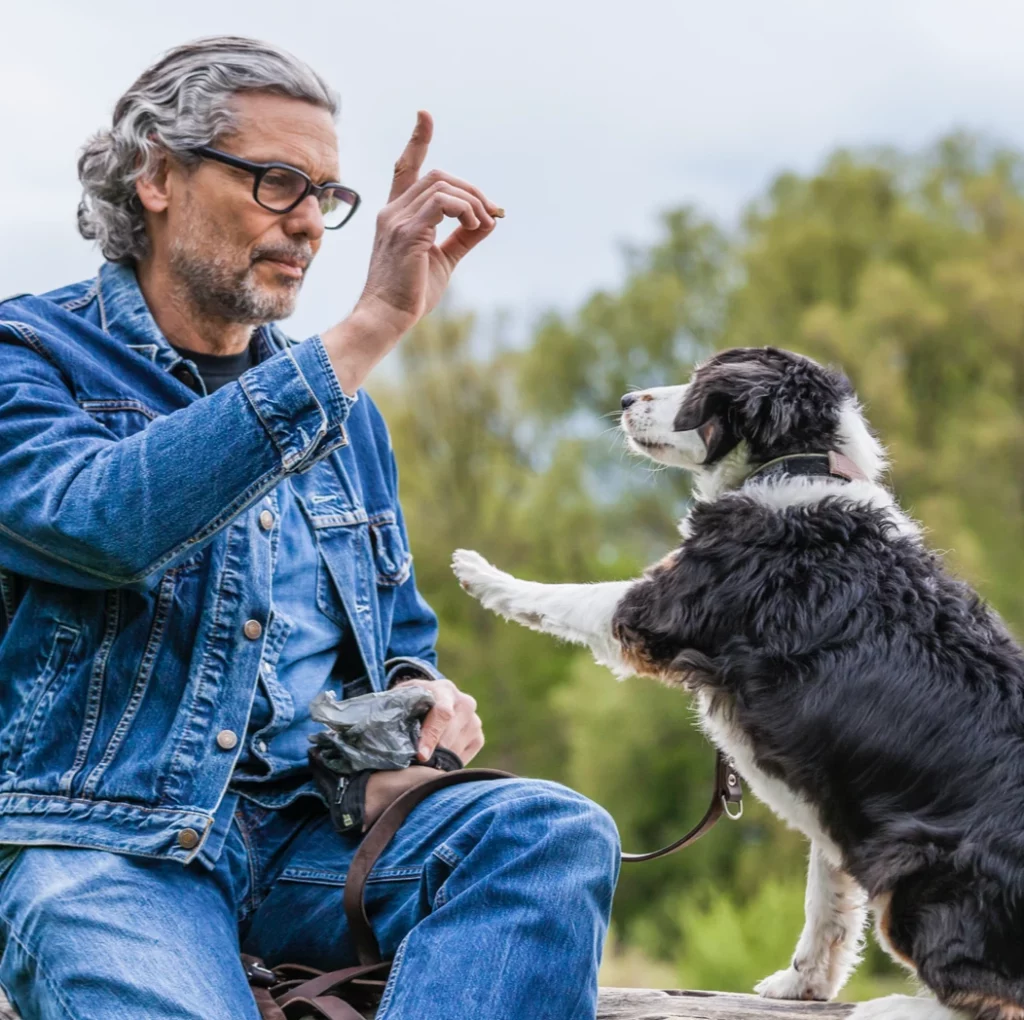OBEDIENCE FOUNDATIONS FOR PUPPIES
Obedience commands (AKA Cues), like sit and come, can be taught from the first day you bring your puppy home.
Sit: Put a Pet Botanics Training reward in your closed hand. Let the puppy smell your hand and slowly move your closed hand over the dog’s muzzle and top of their head. Keep your hand no more than a few inches from the dog. Most dogs will lean their heads back to follow your hand and move into the sit position as they do so. As the dog starts to sit, say sit, and once the dog is seated, give them their treat and praise them! That’s one repetition. Try to do 10-20 repetitions per day but since puppies’ attention spans are short, only string 2-3 repetitions together at any one time.
Come: Starting 5-10 feet from your dog, kneel while gently coaxing your puppy to you. Have a special training treat hidden in your hand. As the puppy comes toward you, wait until they reach you, say come and give them the treat. That’s one repetition. Try to do 20+ per day but not all at once. Make obedience training fun and always end on a positive note.

COMMON BEHAVIOR #1: CHEWING
Puppies chew because they are teething, curious, bored, and like to! The key is to train your puppy to chew on designated toys. Select toys that are durable, soft enough to chew but not so soft they can be torn into pieces, and speaking of pieces, avoid toys with parts that puppies can tear off and possibly ingest.
The more you can train your puppy to chew on their toys, the less they will chew everything else. Make their chew toy a focus of your play sessions and praise appropriate chewing. Try to pick up items you don’t want your dog to chew. While it is eventually reasonable and possible for your dog to learn not to chew on your socks and shoes, it’s best not to have them lying around for the first 3-4 months. Also, make sure your pup is on a high-quality premium diet and gets plenty of exercise.
Most puppies will outgrow the chewing phase by the time they are 8-10 months old, although some take longer. If your dog is still chewing after a year, check out our adult tips for chewing.
COMMON BEHAVIOR #2: NIPPING
Why do puppies nip on you? Just watch them playing with each other to see the answer. It’s normal behavior for them to bite each other playfully.
The challenge is puppies will instinctively interact with you like they do with other dogs. This means you must teach your puppy different, more appropriate ways of interacting with you.
First, avoid rough games and excitable greetings that encourage nippy behavior. Be calm when you greet your pup and be gentle. Encourage play teaches the puppy to chew on proper items or chase and fetch toys. Reward greetings that involve nuzzling or licking as opposed to nipping.
Focus on strengthening the behavior you desire by rewarding it. For example, when your dog licks or nuzzles, you praise and even reward with a Pet Botanics treat.
If your puppy playfully nips you, move your hands out of the way and, if necessary, walk out of the room for a minute before coming back. This will initially be confusing to your pup, and you might have to repeat this process a few times before the dog licks or nuzzles, but the instant she does, praise and reward!

HOUSE TRAINING TIPS
Here are some tips for teaching your pup to go to the bathroom outside.
Feed at set times. This makes it easier to get the dog on a regular elimination schedule. Take the dog to a safe spot outside and praise any elimination there. Make sure you take the dog out regularly and note the dog’s elimination patterns.
Crate training is an effective way of house training but only if used correctly. For example, having a puppy in a crate at night could deter her from going to the bathroom. Then, you can praise her when she goes potty outside when you take her out to eliminate in the AM. Don’t leave your puppy in their crate for more than 2-3 hours except at night. Never use the crate for punishment.
Treats can be a valuable tool to reward proper bathroom behavior. Keep your eye on the dog when they are in the house so that when they look like they have to eliminate, you can quickly get them outside.
Contact a professional dog trainer if you have difficulty training your puppy.

